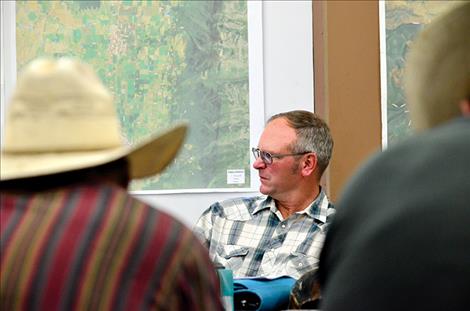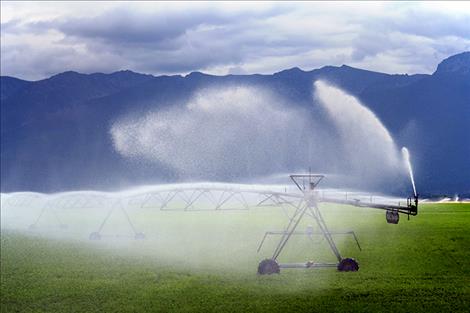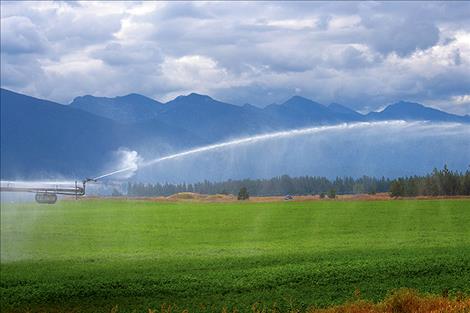Water rights process moves forward
Hey savvy news reader! Thanks for choosing local.
You are now reading
1 of 3 free articles.
ST. IGNATIUS – The water rights adjudication process affecting the Flathead Indian Reservation reached another level in the past few weeks.
At the Flathead Joint Board of Control meeting on Tuesday, irrigators reported receiving letters in the mail concerning water rights claims from the Montana Department of Natural Resources and Conservation.
FJBC attorneys advised irrigators to seek individual legal assistance to review the letters or write a statement rejecting any changes if they feel it’s necessary.
After the meeting, DNRC Water Resource Specialist Kathy Olsen explained in a phone interview that the DNRC finished researching many claims and the results were compiled into letters for individuals to review. The Montana Water Court ordered the DNRC to complete the examination and summary of water rights claims and deliver them to the court — which is why folks are receiving those letters.
“We are trying to get the 76L and 76LJ Basins through adjudication and get them to water court,” she said.
Water court will receive the cases this fall.
“If there are any issues or someone needs more information, they should contact the DNRC,” she said. DNRC contact numbers are available on each letter, and they change depending on the person reviewing the claim.
Folks initially had 30 days to respond and make changes from the date they received the letter. Olsen said extensions will not be given.
“We need to get this done and get it to the court,” she said.
Olsen gave a few examples of the changes that have been made to water rights claims that people might find in the letters. For example, a person’s water rights might have said flow rates are at 60 gallons a minute for domestic use.
“That amount sends a red flag and we look into correcting it,” she said.
Irrigators might also claim 100 acres for irrigation when only 60 are used. She said people should contact the DNRC if issues occur from those corrections.
“Bring us the information,” Olsen said.
People with water rights claims might not realize the source for the water they receive, which might make the numbers in the letter seem different.
“These water rights are personally owned,” she said.
Irrigators might be receiving more or less water from the Flathead Indian Irrigation Project. “That wouldn’t be reflected in the individual water right,” she said.
The Confederated Salish and Kootenai Tribes are also working on settling water rights concerning first decrees as outlined in the CSKT-Montana Water Compact for the same water rights. Water court acknowledges that settling individual water rights claims and the tribe’s claims present two competing interests. Both groups are moving forward diligently to have the claims ready for the final outcome.
CSKT and the State of Montana were granted a stay by the water court on the adjudication for Basins 76L and 76J until Jan. 31, 2017. According to court documents, CSKT and Montana asked for the stay to avoid a conflict while the CSKT-Montana Water Compact is being settled in the United States Senate.
In other news, the FIIP Assessment Rate will remain at $26 an acre for 2017. The Bureau of Indian Affairs proposed the $7.50 per acre increase but it wasn’t approved.
FIIP Manager Pete Plant said in a letter to the FJBC that an increase is needed. He stated that the funds would be used for more personnel, an emergency fund, increased weed control, deferred maintenance, and the potential for increases in pumping costs.
Plant also stated that the irrigation season was coming to a close for this year. General irrigation was shut down on Sept. 15.
Insufficient water in the Camas District shut down irrigation with no stockwater available. Stockwater will be available in the Mission District until stream discharges are insufficient to meet demand and storage is depleted. In the Jocko District, stockwater will be available until stream discharges are insufficient. Certain areas in the Jocko will receive stockwater until it freezes up.


















